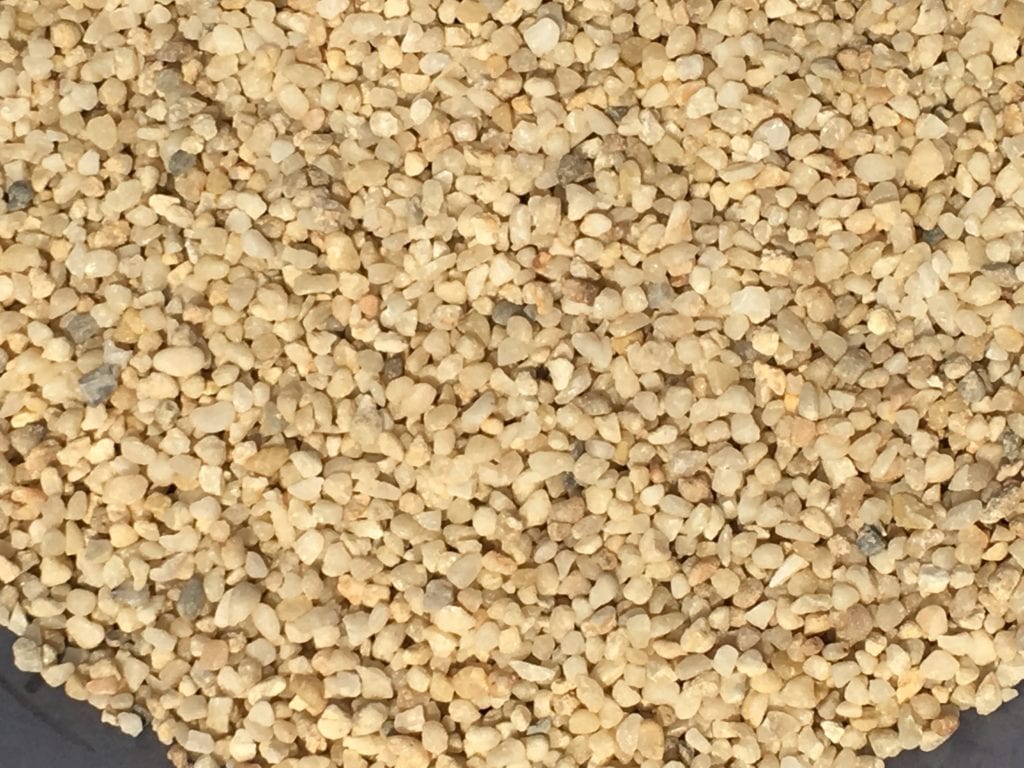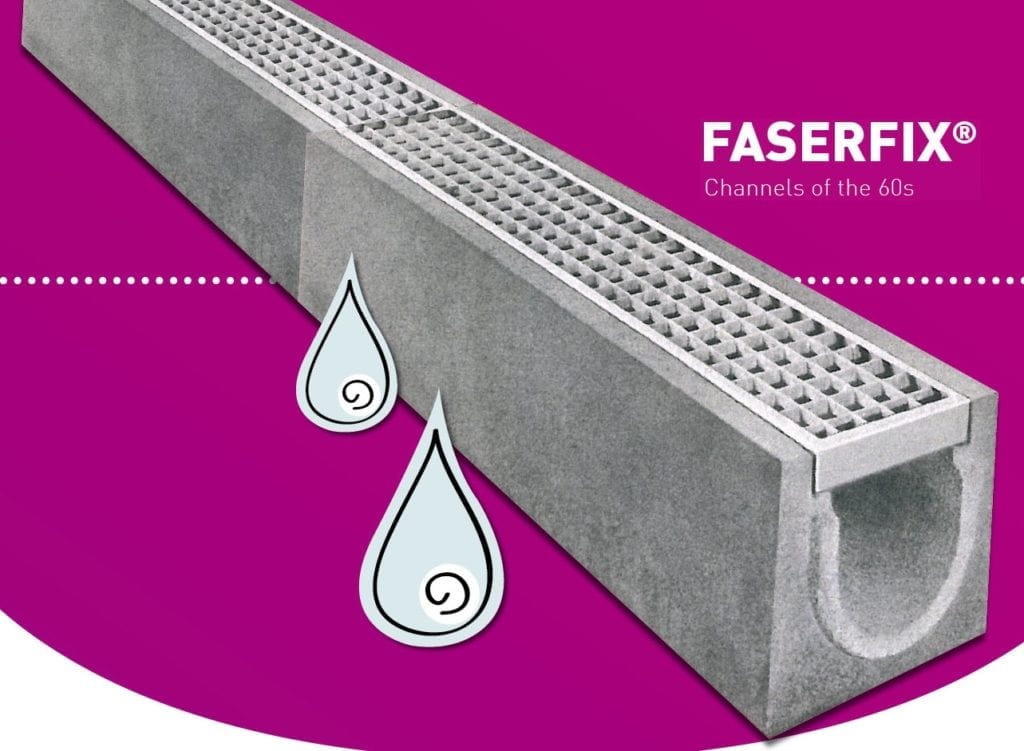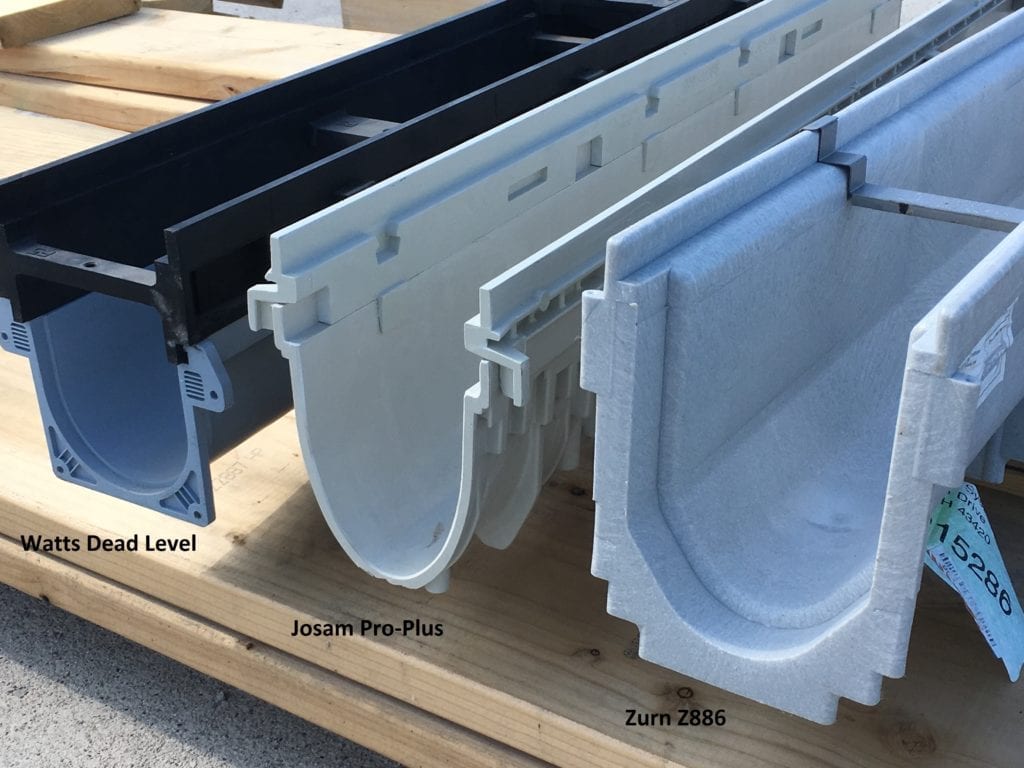The first time I learned of ACO and polymer concrete was in 1985 while on a tour of some silica mines in northeast Ohio. In that part of the country, the Sharon conglomerate crops out of the ground and is mined by a number of industrial mineral firms. The Best Silica Company, located in Chardon, OH, is one such company. It turns out that the silica in that part of the district has a low iron content, which in turn, reduces the amount of “binder” between the individual sand particles. As a result, the silica in this deposit is very clean, rounded from being water deposited and easily beneficiated. The silica at the Fairmont Mineral’s Best Facility is really the “best” silica for a number of industrial processes that use high purity silica.
ACO, located their first manufacturing facility in Chardon, on the edge of the Best Silica property. As I was taking the tour, I learned from my guide about this new company and their products are made from “polymer concrete”. At that time, I was a research engineer designing high temperature concretes for the molten metal industry, so the binder system used in polymer concrete was of interest only as a curiosity. It had no relevance to me at that time. I would learn much later that I had a brush with my future fate in that introduction to ACO and Best Silica.
What Is Polymer Concrete?
If you have ever hand mixed your own concrete for a household project (I’m not talking Sakrete), you will know that the formulation of concrete is 3 scoops of gravel, 2 scoops of sand and one scoop of Portland cement. In this formula, cement is the binder which is activated by water. If your gravel and sand have a proper distribution (that is, particle size distribution), and you don’t add too much water, you will make a concrete that is easy to work with and will achieve a density of about 100 pounds per cubic foot. The concrete will set in 1 – 5 hours, depending on the local conditions (temperature, wind, etc.).
Polymer Concrete is similar to regular concrete in so far that there is aggregate, sand and fine powder in the mixture. However, rather than using water to blend all these components together, a polymer resin is added to the mix. This resin comes in a number of chemistries depending on the application. And, there are a bunch of resin types all with very specific viscosities and working times. Polymer resin, by itself, will not cause the mixture to set into a hardened mass. A chemical hardener, such as MEPK, is required to set off a reaction within the polymer resin, initiating a solidifying event. Not much hardener is required. Usually 0.1% of the amount of resin is all it takes to make this reaction. And, reaction times can be adjusted by the hardener addition.
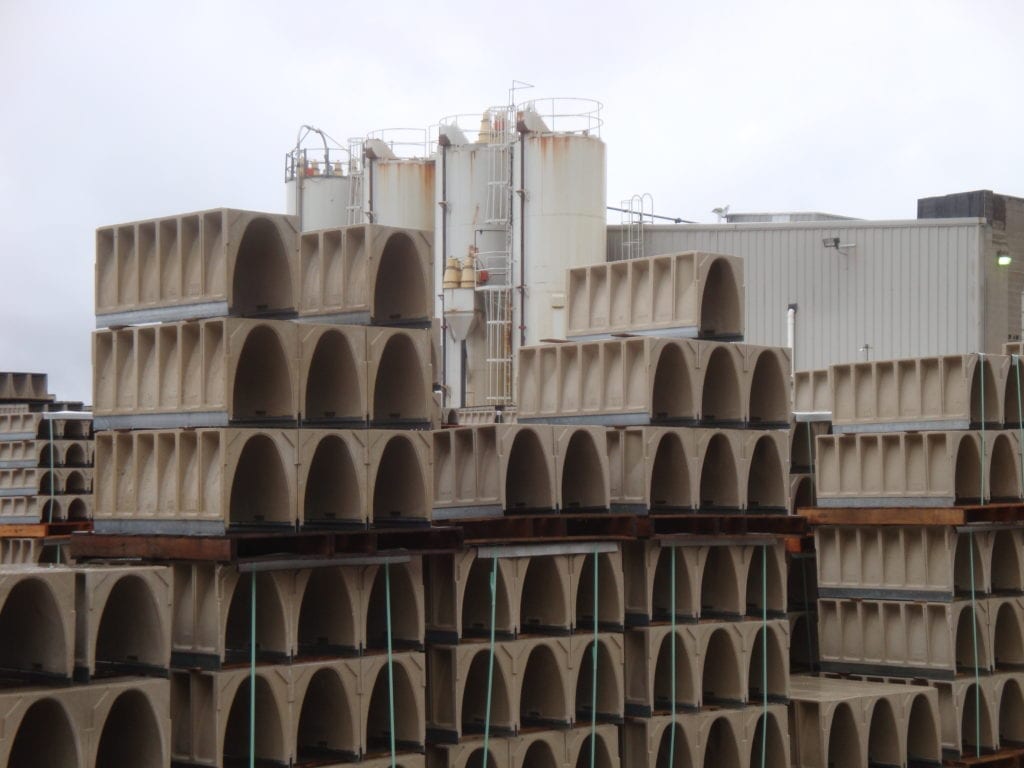 ACO Trench Drain at their Former National Headquarter in Chardon, Ohio
ACO Trench Drain at their Former National Headquarter in Chardon, Ohio
The polymer concrete (PC) used in making trench drain varies by manufacturer. Aggregates used in the polymer concrete usually are determined by what is local and cost competitive. For instance, ACO uses the rounded, high purity silica sands from Best Silica. That is why they initially built their manufacturing facility new the Chardon Mine. Depending on the thickness of the part being made, they will adjust the particle size distribution of the batch. In general, a 6 mesh top aggregate is used (3.36mm) for parts ½ inch in thickness or greater. ACO has come to depend on the Best silica aggregate. Even after their move from Ohio to Arizona, they still purchase a rail car of silica per week from northeast Ohio.
Other manufacturers have found different aggregates to use in making their polymer concrete formulations. Hubbell, the largest polymer concrete manufacturer in the U.S., for instance, uses dolomitic limestone to make their Polycast polymer concrete trench drain. Again, this is a local raw material for their Tennessee facility. In another situation, I have studied Chinese polymer concrete channels that, I swear, use recycled glass as an aggregate in their formulation. Again, polymer concrete formulations will change depending on the application and available raw materials.
Polymer Concrete has European Roots
More than fifteen years after my introduction to polymer concrete, I became reacquainted with ACO while working as a salesman for a precast concrete manufacturer. As ACO was part of my product offering, I was able to study the product line better. What I have learned is interesting to trench drain nerds. If you have made it this far in the article, consider yourself as such.
Initially, polymer concrete as a material was a European phenomenon. Early development was in Italy after WWII. It spread to Germany and was initially used to make feeding troughs for farm animals. The success of polymer concrete and the founding company of modular trench drain belongs to a company named Hauraton. They are a significant European brand to this day. In around 1975, ACO (Germany) began making modular trench drain channels using polymer concrete. Using an aggressive marketing strategy, they sought to develop the construction market in the United States, which to that point had not been approached. In or around 1977, ACO set up shop in the States.
Over the next few years, market acceptance for modular trench drains grew in the United States. Soon, more competition entered the newly formed modular trench drain market. Polycast, which was the first U.S. made polymer concrete trench drain was initially developed in Fargo, ND by a construction company. With the help of another European company, ABT (PolyDrain) began making channels in North Carolina. Technology, and therefore products, out of Europe were metric based. Polycast, the American based company, elected to use imperial measurements, making their channels 4 foot in length. ACO and ABT being European based made their channels one meter in length. This division in units of measure is ever present in the trench drain market today. It is an indication of the technologies source.
Hauraton’s 1st Polymer Concrete Channel
No matter, these three companies were the foundation of the modular polymer trench market in the U.S. and had some commonality in the design of their products. All three manufactures had 4” (or 100mm) wide channels. The polymer concrete was based on a polyester resin of equal quality. The channels were all pre-sloped to around 0.6%. The channels all had recesses built into the top edge so when installed, the grating would sit flush in the channel. And the top edge of the exposed channel was polymer concrete. It is here, at the top edge of the drain body, where ACO made product innovations to help differentiate themselves from the rest of the market.
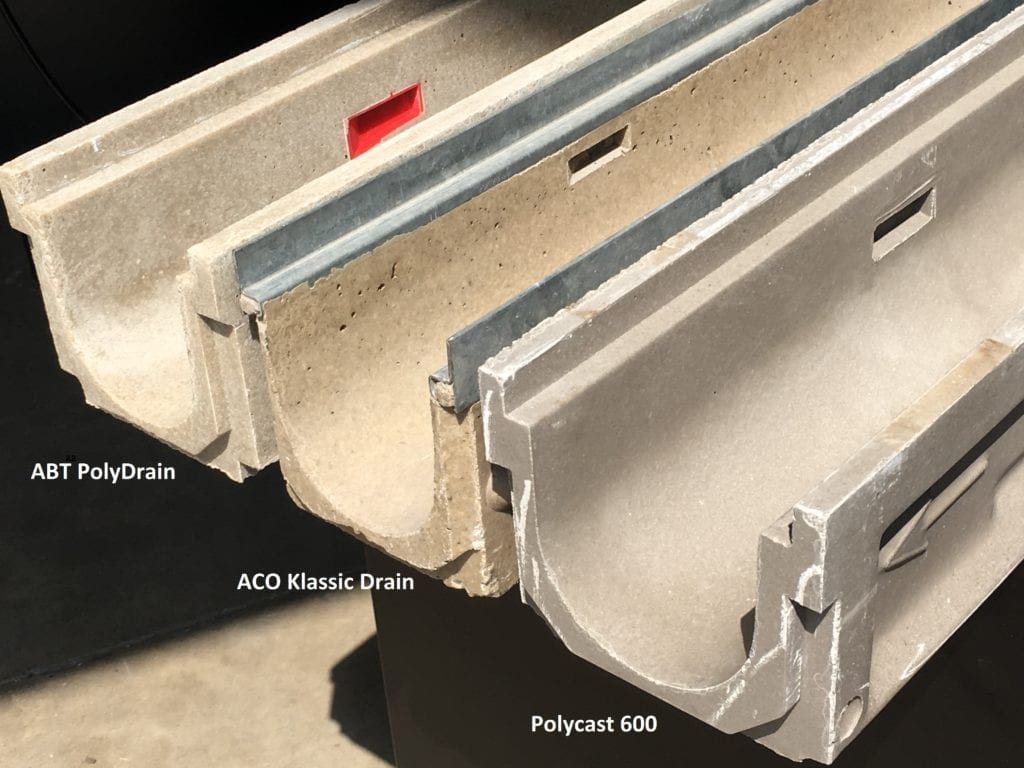 PolyDrain, ACO Klassic Drain and Polycast 600 Channels
PolyDrain, ACO Klassic Drain and Polycast 600 Channels
ACO was the first trench drain manufacturer, at least in the States, to have the “integral metal” edge. They realized that the wide exposed polymer concrete edge was prone to chip under the right conditions. And, in areas prone to freeze-thaw, the exposed edge could deteriorate over time. From an aesthetics standpoint, the integral edge offers a clean, trim look that out performs the exposed concrete edge. Both Polycast and PolyDrain have remedied the aesthetics of their channel by developing a metal overlay or edge protector that acts as a sheath to cover the channel edges. Though, as nice as the overlay technology may look, ACO’s integral metal edge seems to have struck a chord with architects and engineers, alike.
Jumping on the Band Wagon
Over the next 20 years or so, polymer concrete trench drains gained acceptance in the market place. Those frame and grate systems that required the contractor to build a wooden form started becoming more costly as skilled labor rates in the States rose. At the same time, there was a parting of differentiation in the marketplace between drains used in site work (outside) and plumbing (inside). Plumbing hardware companies such as Zurn, Watts, Josam and J.R. Smith began aligning themselves with the polymer concrete trench drain manufactures and began promoting modular drains in their markets. Polycast, for example, manufactured trench drains for Watts and Zurn. ACO entered into a relationship with Jay. R. Smith. Josam began working with another European giant, MEA, and established the MEA-Josam line.
The original three manufacturers (ACO, Polycast and PolyDrain) had established the U.S. Trench drain market and had invested in manufacturing facilities. These three companies also represented the drainage sales in the Civil (outside) market. In early 1990’s there began a gradual migration of the plumbing markets to move away from polymer concrete to plastics. For instance, Zurn, which had previously bought and re-sold the Polycast brand, moved away from Polycast (polymer concrete) to fiberglass (Z806) and then plastic channels (Z886) because they were able to establish channel manufacturing from these materials cheaper than they could a polymer concrete channel. Likewise, Watts and Jay R. Smith left their polymer concrete trench drain roots to developed channels based on polyethylene plastic. And, Josam, not to be left behind, recently shipped all their MEA polymer channels to Europe and Canada and began promoting a fiber reinforced structural plastic. So now, what we are experiencing in the trench drain marketplace tends to be PC channels for exterior and some interior applications. Plastic channel drains are seen in some interior commercial applications and many residential applications (largely exterior).
One can argue that the future of trench drain will be with plastic drain products. But, I doubt it. I would argue that polymer concrete channels are much better suited for exterior applications than plastic channels. Polymer concrete is more similar in composition to standard Portland cement based concrete that encases the channel. Because of their similarity, polymer concrete channels “play” better with concrete than do plastic channels. This is largely because of the differences in thermal expansion between plastic and concrete. On hot days, plastic channel tend to expand and separate from the concrete that they are encased within. Oppositely, on cold days, plastic channels can shrink more than the concrete around than and form stress cracks. This problem has plagued the plastic channel industry from the beginning and is amplified with longer drains and large swings in temperature.
It could be that plastics channels are better suited for stable interior environments. For instance, I generally see plastic pre-sloped channels with plastic grating at commercial pools and kennels. The plastic stands up to chemicals and is not sharp to the touch of bare feet (or paws). There is also a price advantage to plastic components over polymer concrete and metal. However, for interior processes with hot solutions (Breweries) or upscale drain systems requiring fine detail, polymer concrete channels should be considered in the drain selection process.
More Information about Trench Drain Systems
If you need further information on trench drain products or need help with a drainage solution which utilizes modular drains, contact the helpful folks at Trench Drain Systems (TDS). Their website, www.TrenchDrain.com, will guide you through the products and applications commonly associated to linear drains. Residential customers can find a wide assortment of functional and decorative systems on their on-line store www.DrainageKits.com. Or call them at 610-638-1221. They don’t mind.


